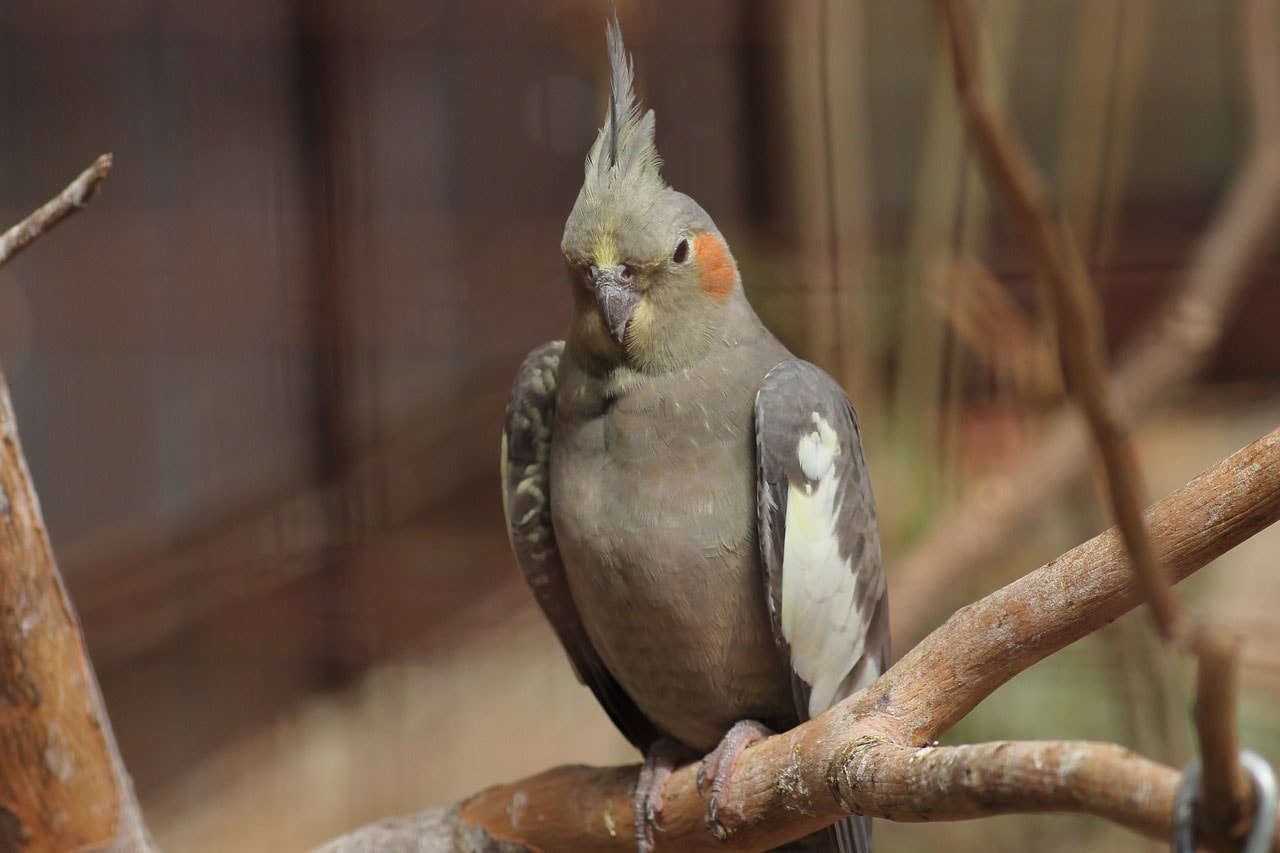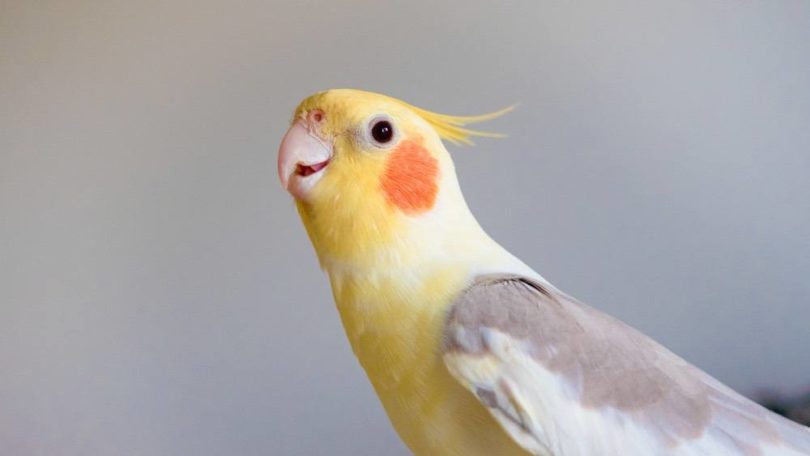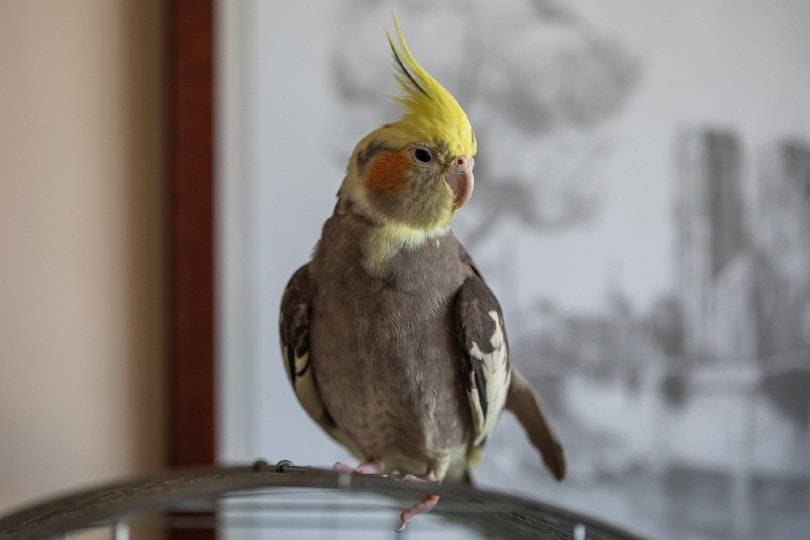Albino Cockatiel: Pictures, Facts & History
Updated on
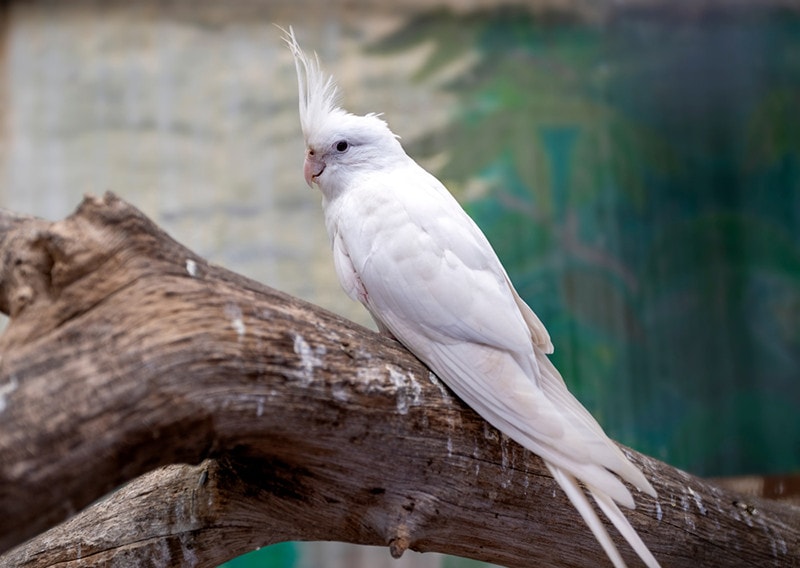
Cockatiels have captivated people ever since Scottish naturalist Robert Kerr first described them and donned them with their first scientific name, Psittacus hollandicus, in 1792. These birds quickly became popular pets by the 1860s, with selective breeding soon following.
These occurrences set the stage for mutations and other color variations, like the Albino Cockatiel. This one is a second-generation crossing involving two other common color morphs. How it came about involves knowledge of cockatiel genetics and information about how genes are shared and expressed.
The Earliest Records of an Albino Cockatiel in History
Cockatiel breeding was well underway by the late 1800s. The timing proved significant since the Australian government banned the export of wild birds in 1939. That meant the gene pool for future offspring would only come from the existing captive stock. Cockatiels were wildly popular all across Europe, finding their way to other ports, such as the United States.
A cockatiel in the wild is an olive-brown bird with an erectile crest and a long, pointed tail that’s half the total length of its body. The other distinguishing feature is its bright orange cheek patches. The sexes are similar. However, the female’s coloration is more muted than the male’s. Two mutations had to occur before enthusiasts could selectively breed the Albino Cockatiel.
The Lutino Cockatiel resembles the former, only its coloration is yellow-white and not a true Albino. While true albinism with the signature red eyes can occur, it’s extremely rare. Albino Cockatiels are the result of pairing a Lutino and a White Face Cockatiel.
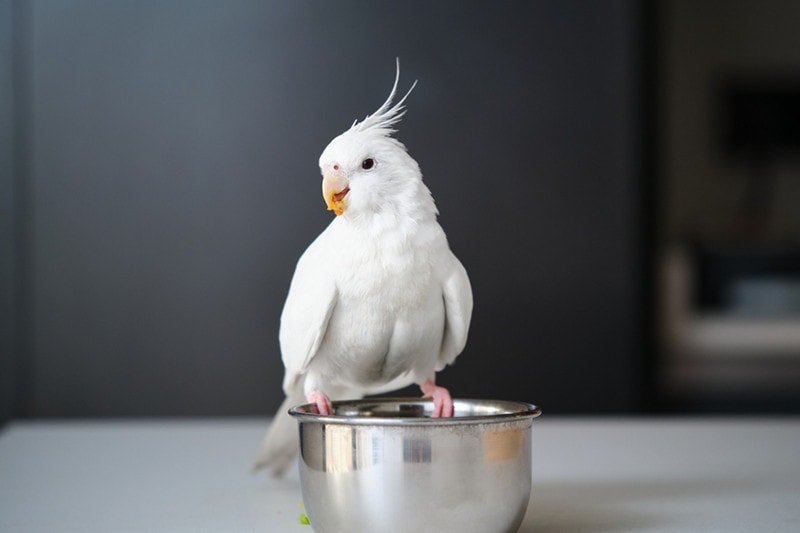
How the Albino Cockatiel Gained Popularity
The two parent mutations had to occur first before enthusiasts selectively bred an Albino Cockatiel intentionally. Understanding how the variation gained popularity involves some basic genetics. Traits, like the feather color, can be dominant or recessive. The former means that only one copy of the gene is necessary for it to show visibly. The latter requires both to code for the same attribute.
That’s a simplistic explanation since many traits involve more than one gene. However, the White Face mutation suppresses the expression of a special pigment called psittacine, which gives the cheek patches their color. White Face Cockatiels show up when both parents contribute the affected gene to their offspring. The Lutino variation is a bit more complicated.
Avian reproduction differs from mammalian because females, not males, determine the sex of their offspring. Their sex chromosomes are X-Y as opposed to the male’s X-X. Some traits are sex-linked recessive in birds, meaning they are on the X sex chromosome. The female’s Y chromosome doesn’t affect the expression of these attributes.
Breeders figured out that a female Lutino Cockatiel could pass the color morph on, whereas a male may or may not. He can carry the gene and not appear that color. Enthusiasts call these birds splits. The only way to ensure Lutino offspring was to breed males and females of this color mutation. The fact that a male can carry the Lutino variation unknowingly makes him a genetic wild card.
Breeding an Albino Cockatiel that shows the White Face and Lutino mutations involves pairing two birds that already express it visually. That makes this hybrid somewhat rare. Chance brought about the necessary mutations to make it happen and for enthusiasts to selectively breed birds to express it.
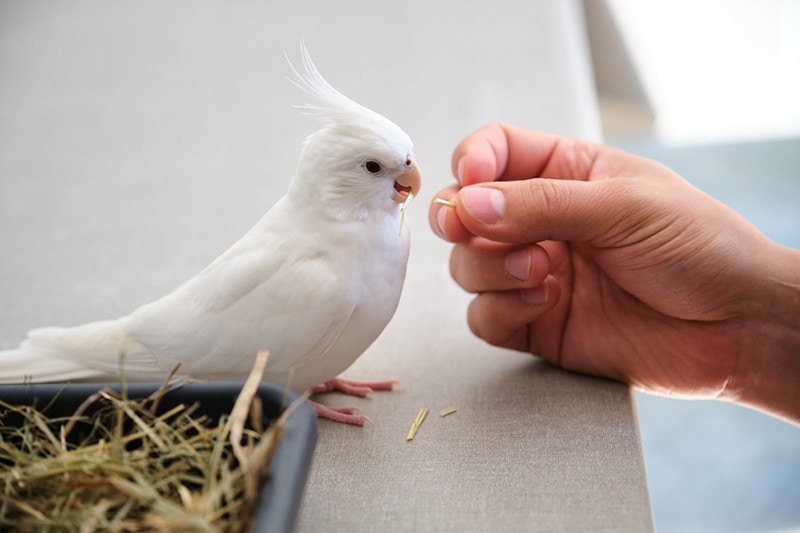
Formal Recognition of the Albino Cockatiel
The American Cockatiel Society (ACS) recognizes the Albino variation as one of its formal classes. Exhibitors must also show birds that meet the organization’s official standard for the animal. Of course, the term “mutation” carries negative connotations of genetic weakness. Other issues rest with another feature sometimes seen in Lutino Cockatiels: crest baldness.
The reason for the higher propensity is the limited gene pool. That sets the stage for unwanted mutations to appear. Concerns about inbreeding and the effects on other undesirable traits and inherited health conditions exist with other companion animals and domesticated livestock.
The National Cockatiel Society of Australia also recognizes the Lutino and White Face variations. It doesn’t have a separate listing for the Albino. Instead, it explains that true albinism involves the elimination of the pigment melanin. Cockatiels have other pigments that are expressed in the Lutino Cockatiel. The organization also uses the terms Albino and Lutino interchangeably.
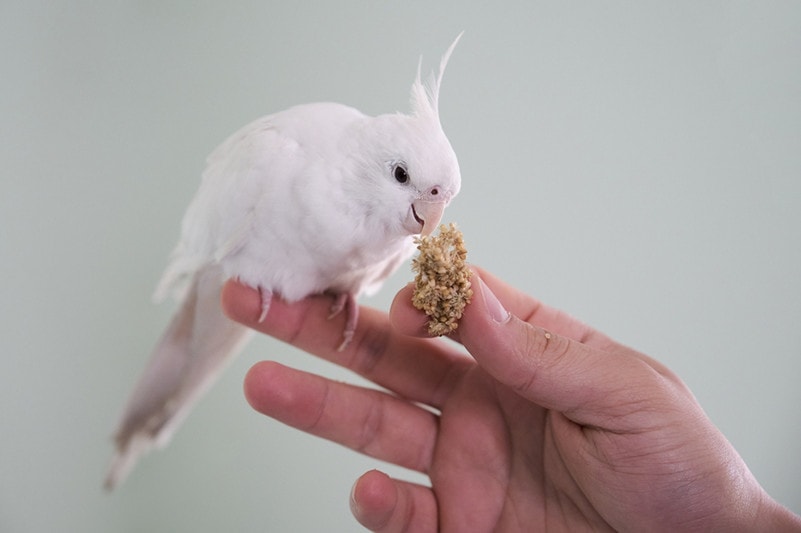
Top 4 Unique Facts About the Albino Cockatiel
1. The ACS Recognizes 10 Accepted Mutations
The ACS has formal classes for 10 mutations, both simple and sex-linked. They include familiar ones, like Pied and Pearl. It also lists new ones, such as the Pastel Cockatiel. Formal recognition requires consistency in the expression of the various traits.
2. Male & Female Cockatiels Look Alike Until the Male’s First Molt
It’s easy to tell males and females apart by their various coloration patterns. Like many species, males are more colorful. However, that’s not the case with male cockatiels until they go through their first molt. Only then will they get the bright colors that define the sex.
3. The Cockatiel Has Several Other Names
Like any other animal, the cockatiel has several nicknames given to them by other people who encountered this docile and friendly bird. The Dutch referred to them as “Kakatielje,” which means “little cockatoo.” Cockatiels are part of the same family as their larger counterparts. Other monikers include the Aboriginal names Quarrion and Weero.
4. The Cockatiel Is The Only Member of Its Genus
We mentioned the first scientific name of the Cockatiel as Psittacus hollandicus. That changed in 1832 when German ornithologist Johann Georg Wagler changed it to its present name Nymphicus hollandicus. The new one is a better representation of the cockatiel’s unique taxonomy and its place in the animal kingdom.
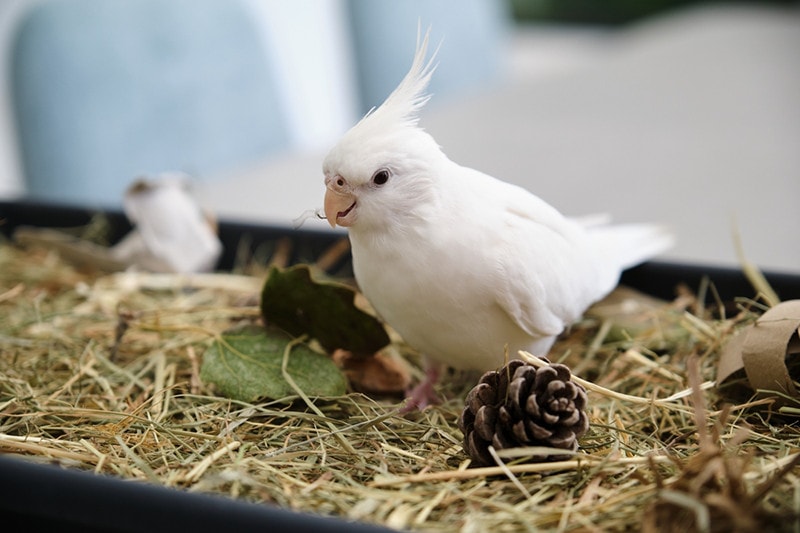
Does an Albino Cockatiel Make a Good Pet?
One of the things that make Cockatiels so endearing is their pleasant disposition. They enjoy being around people, with some seemingly enjoying the attention their owners give them. They are also talented singers, often mimicking other household noises, like telephone rings. Cockatiels are also easy to take care of and are relatively long-lived, with lifespans often over 15 years in captivity.
While some parrots are quick to bite, the cockatiel isn’t. Nevertheless, it’s essential to gain the bird’s trust with frequent handling. Treats are also a powerful motivator if your pet is shy. Owning one is affordable, with your most costly expense being its cage. They also make excellent pets for older children or first-time bird owners.
Conclusion
The Albino Cockatiel is a striking bird and the result of two already interesting variations. Its white color is sure to attract attention to this pet. You may find this color harder to find and perhaps more expensive. Nonetheless, it will make a delightful pet that you and your family will enjoy and love for years to come.
See Also:
Featured Image Credit: ONGUSHI, Shutterstock


